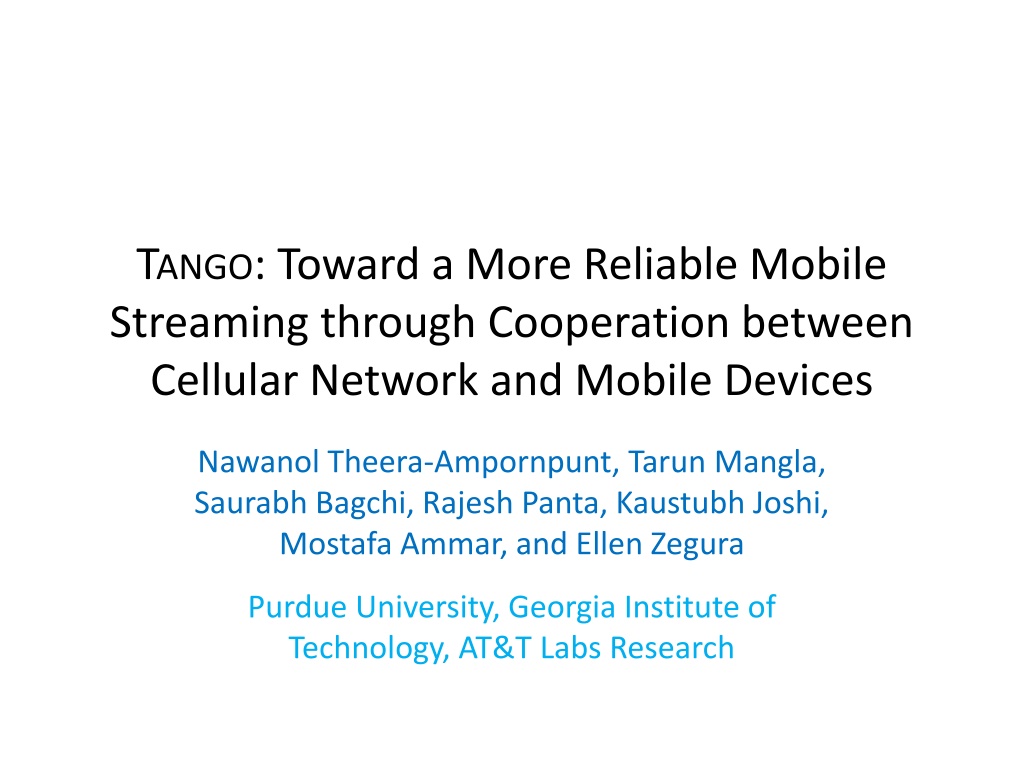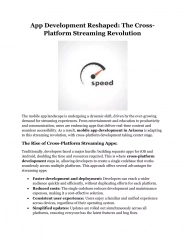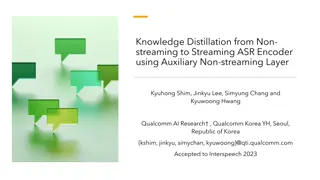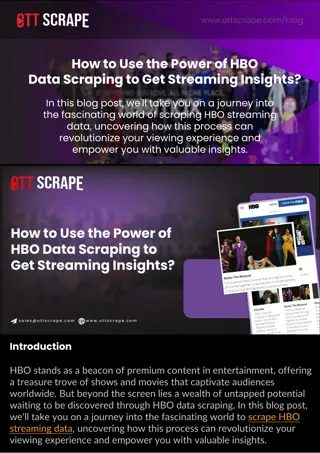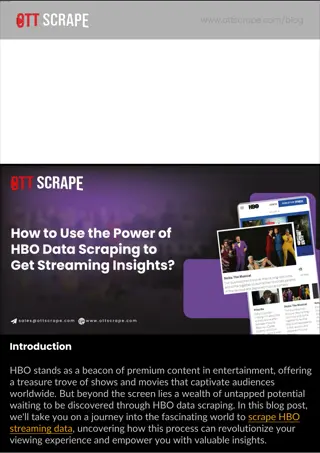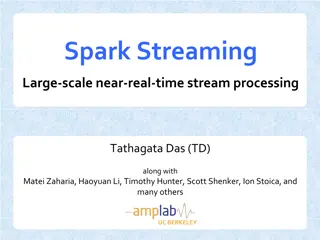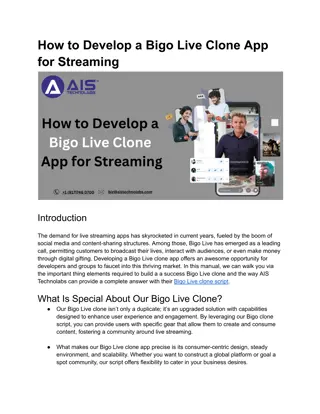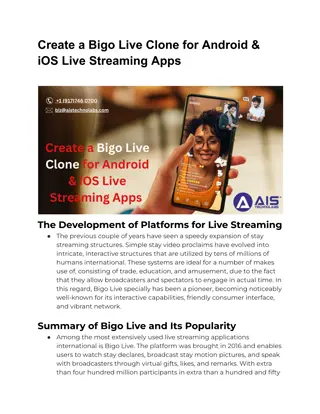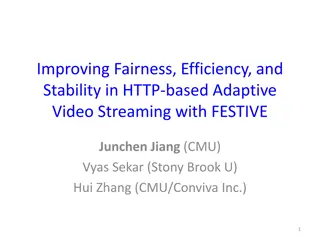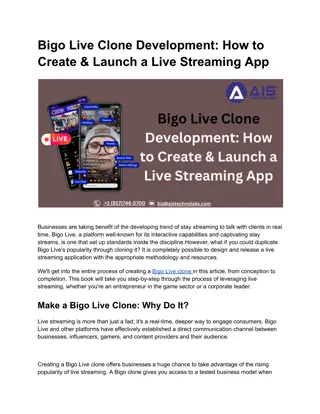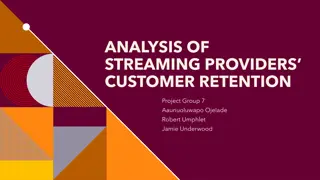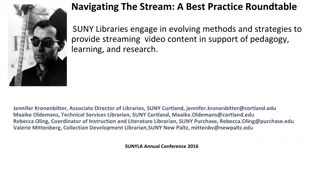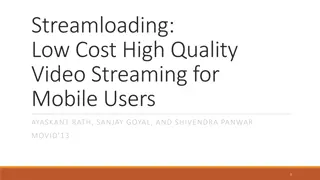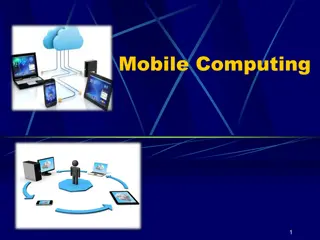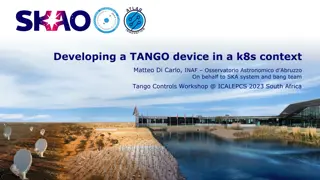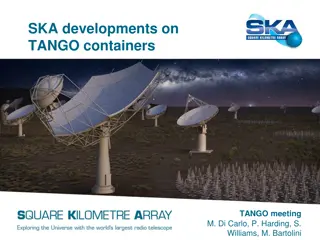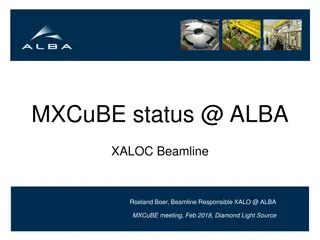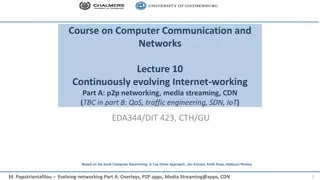TANGO: Reliable Mobile Streaming Cooperation
This study delves into enhancing mobile streaming reliability through collaboration between cellular networks and mobile devices, proposing innovative solutions like data pre-caching services and mobility prediction models. By optimizing buffer sizes and leveraging network intelligence, the aim is to create a more seamless streaming experience for users. Trace-driven simulations are employed to evaluate the efficacy of these strategies in real-world scenarios.
Download Presentation

Please find below an Image/Link to download the presentation.
The content on the website is provided AS IS for your information and personal use only. It may not be sold, licensed, or shared on other websites without obtaining consent from the author.If you encounter any issues during the download, it is possible that the publisher has removed the file from their server.
You are allowed to download the files provided on this website for personal or commercial use, subject to the condition that they are used lawfully. All files are the property of their respective owners.
The content on the website is provided AS IS for your information and personal use only. It may not be sold, licensed, or shared on other websites without obtaining consent from the author.
E N D
Presentation Transcript
TANGO: Toward a More Reliable Mobile Streaming through Cooperation between Cellular Network and Mobile Devices Nawanol Theera-Ampornpunt, Tarun Mangla, Saurabh Bagchi, Rajesh Panta, Kaustubh Joshi, Mostafa Ammar, and Ellen Zegura Purdue University, Georgia Institute of Technology, AT&T Labs Research
Motivation Mobile devices treat cellular network as black box Communicate Mobile Device Application Server Cellular Network 2
Audio Streaming Pandora model songs are chosen by the service Online audio streaming where next songs are known 3
Buffer Size Tradeoff Large buffer -> more resilient to congestion Small buffer -> lower bandwidth waste in case user abandons the stream Ideal: small buffer when connectivity is good; large buffer when congestion is expected 4
Data Pre-caching Service Runs inside cellular network Monitors user s movement trajectory Sends an alert to streaming application when user is predicted to enter a congested area Application significantly increases buffer size to mitigate effect of congestion 5
Overview Offline phase Mobility prediction model training Online phase User location prediction Network load monitoring Legend Online Phase Offline Phase 6
Mobility Prediction Model Operates at cell sector level Estimates probability of entering cell C in the next u minutes given past trajectory Based on simple conditional probability: P(enter cell C | trajectory) = Freq(enter cell C, trajectory) / Freq(trajectory) Gets counts for each unique trajectory from trace data 7
Mobility Prediction Accuracy (number of past cells in trajectory) 8
Trace-driven Simulations We rely on simulations to estimate benefits of pre-caching service for large number of users Audio streaming client emulator keeps track of current song position, buffer level, user location, etc. Emulated cells have fixed capacity, with background traffic from real traces 9
Simulated Congestion Simulated congested cells have capacity of zero Three simulations, each with one type of congestion: Static congestions congestion in 20% of cells for the whole duration Random congestions congestion in 50% of cells lasting 0-20 minutes Flash crowds 50 congestions that move like a user 10
Approaches Compared Baseline: fixed buffer size and no bit-rate adaptation MPEG-DASH: fixed buffer size w/ bit-rate adaptation TANGO: dynamic buffer size w/ and w/o bit-rate adaptation w/ and w/o perfect location predictor 11
Conclusion We propose TANGO, a framework that enables cooperation between mobile devices and cellular network We introduce data pre-caching service that notifies streaming application of impending congestion Trace-based simulations show service reduces pause time by 13-72% depending congestion type and number of users 17
Questions? 18
